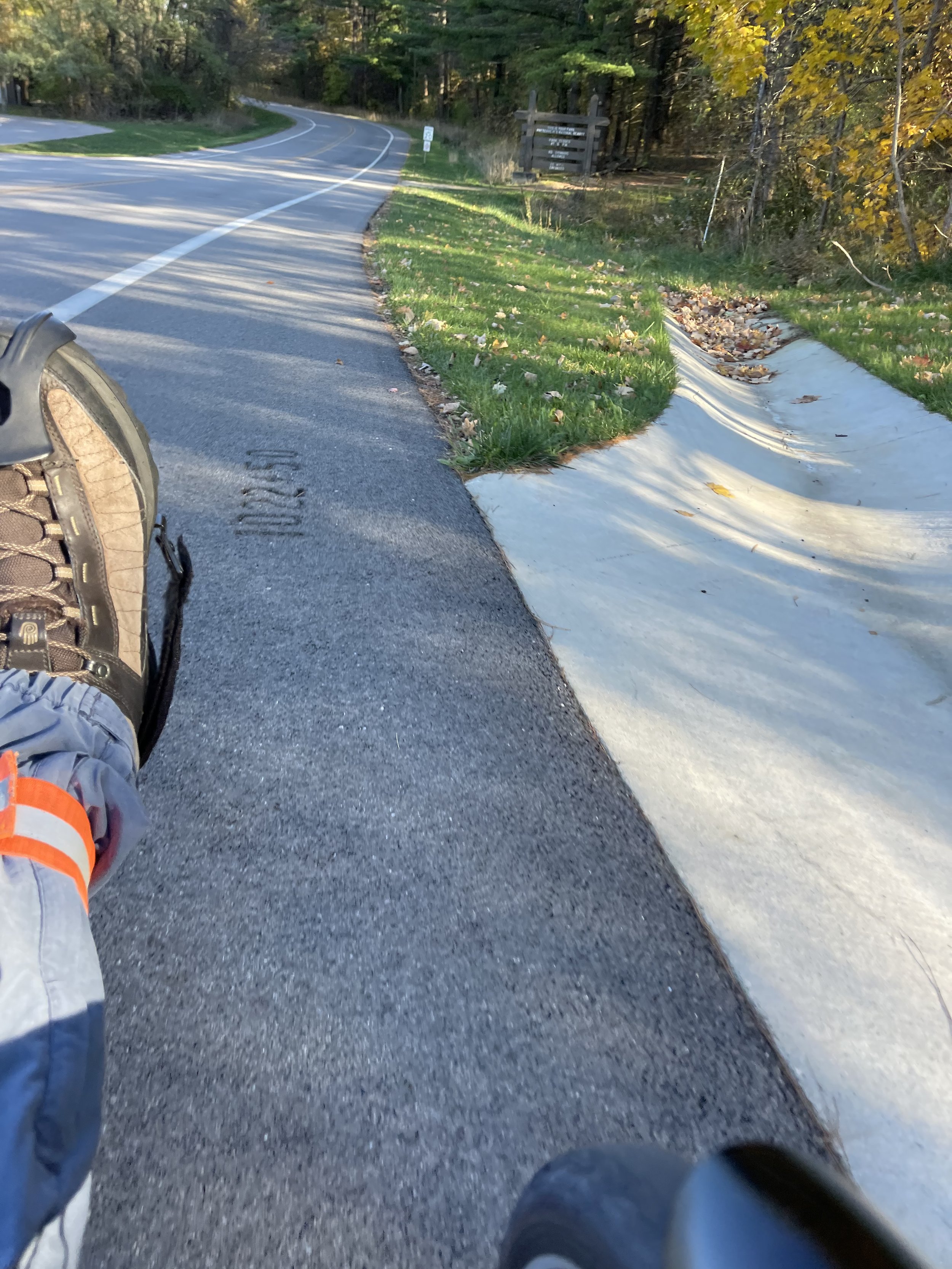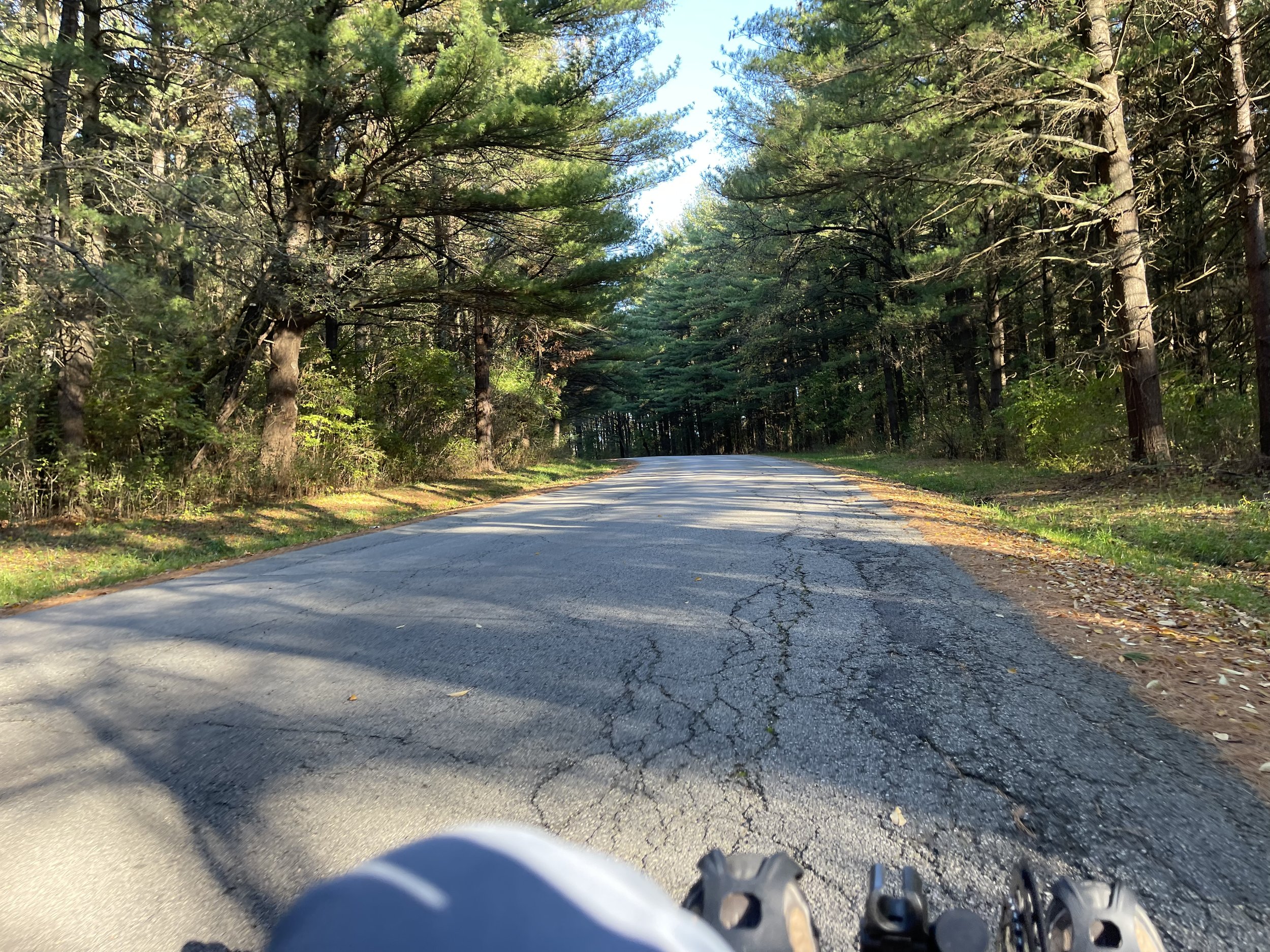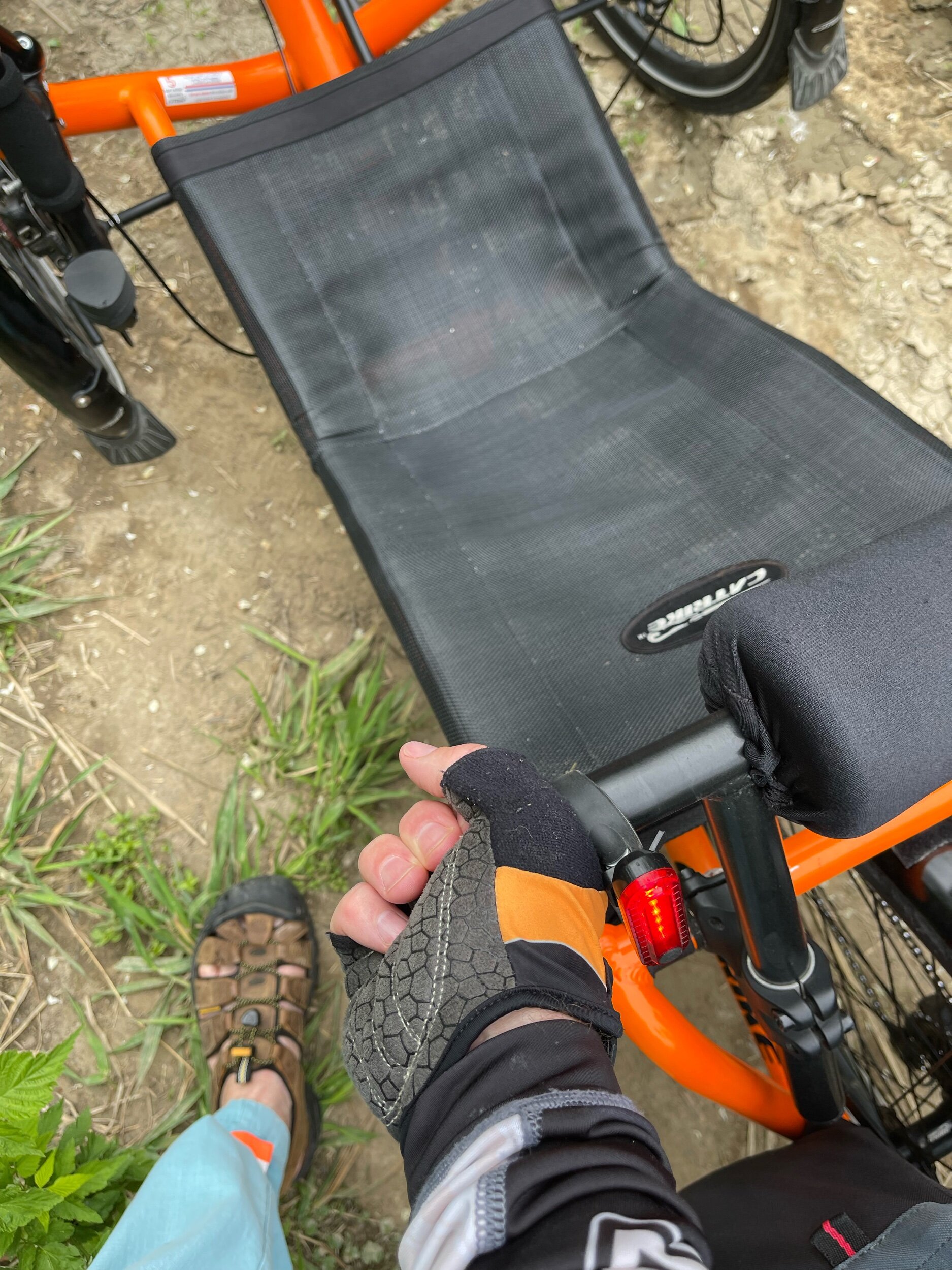Happenstances of life put me in the Rockford area this past weekend on an unusually nice November day. Prior to moving back out to our Homestead we had lived in Rockford for a solid 17 years. In many ways the area, with its prominent park and bike trail system, as well as the presence of Rock Cut State Park at the north end of the city, reinvigorated my enjoyment of cycling after leaving college.
When we moved our engagement with the city continued due to family, work, and our child’s engagement in competitive gymnastics with a program situated there. And given those factors, I would continue to periodically bring along my machine. In these latter events, I would typically ride the path from Rockford Bicycle Company into Rock Cut State Park, around the park, and back again. This is a 12-mile loop that offers a bit of hill climbing both up into the park, and along the park road, as well as both urban, woodland, and lake views. In many ways, Rock Cut is a jewel.
Still, it had been several years since I’d ridden the trail. It’s become derigeur to blame such things on the pandemic, but that’s not the case here. Looking into Cyclemeter, my last foray on it was in August of 2018, well before any restrictions went into place; and the time before that had been nearly an entire year before - August 2017. As soon as I started looking up those dates I remembered why - in my notes for the 2017 ride on the trail I wrote, simply: “the condition of both the trail and the road around Rock Cut really, really sucks”. The asphalt trail itself was punctuated by a multitude of frost heaves and cracks, and the ring road around the park itself was full of potholes. It had reached the point where traversing the trail delivered a substantial beating to the rider.
But all of that was over three years ago, so it seemed reasonable to investigate whether there had been any improvements. And besides, I’d never ridden the trail on my Expedition - my last attempt was nearly a year before getting my Atomic Orange machine.
I’m glad I did. As soon as I pulled up to the parking lot at Rockford Bicycle Company I could see that the path itself looked to have a relatively fresh layer of asphalt on it. A quick Google Search suggests that this is a very recent change, with the work apparently having been done last month. It certainly looks very new:
And it rides much, much better. The new layer of surface also included improvements where the path connected to the couple of bridges along the way - this was often a jarring transition in the past. And this gave me optimism for the route overall, but I kept that optimism guarded - the Perryville path and the state park are governed by different entities. The improvements here did not necessarily mean that things would be better once I got into the park itself.
I mulled this as I rode along Perryville Road. This first 2 1/2 miles of the trail is the urban portion. It is situated alongside, and mirrors, Perryville road, which is a heavily traveled four lane roadway. This section involves crossing four separate intersections (in each direction), three of which are fairly busy and governed by traffic lights. This has always been my least favorite part of the ride, and is probably the biggest downside to the path itself: The crossing are situated at the intersections, which is probably not ideal, but the path was added after the roadways were built. One wants to be alert to the traffic patterns during these crossings.
Getting past that, however, rewards with entry into the winding, tree covered section of the path that parallels Willow Creek up into Rock Cut.
This is a hill climb - you are riding up the path as Willow Creek falls. How much of a climb depends upon your experience, of course. It gets steeper as you go, and there is no real way to build up speed going into it - it’s all climb on this part - so it’s a challenge for the newer or less experienced hill rider. But getting to the top yields the entrance into Rock Cut:
Once crested the hill and could see into the park I could see that there had been improvements. Immediately it was clear that the bridge across the spillway had been replaced (you can see it in the background in the picture above). The old bridge had a wooden roadway with steel bands for vehicle wheel support stretched across it - the new one is an entirely concrete affair. I could also see to the north that some sort of sidewalk had been added along the roadway.
I started across the bridge to follow the road loop around Pierce Lake. The road here has been re-surfaced, and is much improved. I could see also that there is a new, paved bike path off the road that circles closer to the lake. I was interested in following my old route, so I didn’t explore that path, though I would later see that it came out near the concessions and boat ramp.
What I found about the roadway itself was a somewhat …mixed bag. The road was new following the bridge, but seemed less so shortly afterward. Then, as I came down the hill towards the concessions and boat ramp, I discovered another new section of roadway onto which a bike lane had been added! It just sort of appeared there, following that downward section.
I shifted over to the bike land and proceeded, only to find another 3/4 of a mile or so later (I am estimating) that it just disappeared as the road returned to older surfacing.
The bike lane reappeared again on the south side of the lake.
It doesn’t take much extrapolation to figure out that the park is getting its improvements piecemeal (these done in 2019, according to these plans) . What is notable is that they clearly did focus their initial efforts on what were the absolute worst parts of the roadway around the park. While not all of the surfaces were new, and I did have to steer around some cracks in the older surfaces, I did not have to engage in the rampant dodging of potholes that I recall from my rides in 2017 and 2018. And, while it was very nice to have that dedicated bike lane where it appeared, traffic around the park is governed at a very slow limit (20 mph, I believe), and even with the hills and curves, most sight lines are fairly clear. If you are comfortable riding on the road in general, you will be comfortable here, with or without the dedicated lane.
The hills around the park road do mostly have lead-ins to the uphill sections, so you will mostly have an opportunity to gather speed going into them. The loop around the park itself is a little over four miles, bringing you back to the top of Willow Creek.
From Willow Creek it’s downhill all the way back to Perryville Road. It isn’t a downhill free-for-all though. The path is fairly heavily used, and the winding and twisting nature of it through the trees means that suddenly encountering others is an imminent event - you have to moderate your speed here (my fastest speeds were on the downhill road sections within the park). But given the woodland scenery, it’s hardly a sacrifice to set aside a bit of the downhill speed.
The rest, is, of course, just a reverse of the beginning of the ride. For my part, I found that the Expedition handled the route quite well. I was able to maintain speeds here above my prior rides on my Catrike Pocket, which I wasn’t sure would be the case, as the 20” rear wheel on the Pocket might have given it the advantage. In the end, I was on par with my times on my old Cannondale, tho this might simply owe to the fact that I’m riding a lot more than I was back then.
I had put off writing about this route back in 2017 and 2018 because I really did not feel I could recommend it back then - the poor road surfaces really made it an unpleasant ride. That has changed, now, with the improvements noted here. The new surfaces are wonderful, and within the park itself they appear to have made good choices about where to put their efforts - the older surfaces, where they remain, are good enough to allow for a decent ride.
I can’t recommend this ride as a destination, per se. It’s too short, and too much of it involves paralleling a major roadway to suggest that anyone travel just to ride on it. But if you are traveling out towards Rockford anyway, and are looking for a place to ride, I think this route offers a good reason to bring your cycling machine along.
I’ll note also that it appears that there are plans underway to extend the Perryville path up into the town of Roscoe and connect it to the Stone Bridge Trail. It looks like that’s likely a couple of years out yet, but if/when finished would connect it to a couple of the rail-trail systems in the area, heading out into more rural areas. For folks who are interested, it may be worth it to check back on that.



































